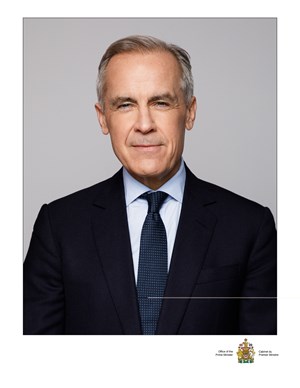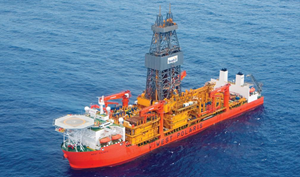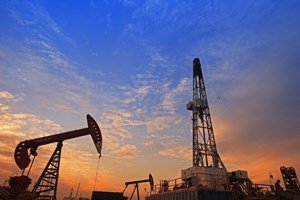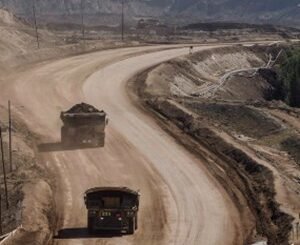Image: Trans Mountain
During the Executive Conference of the Global Petroleum Show last week, Alberta’s premier, Danielle Smith, provided an update on the province’s energy sector and gave her assessment of the new federal administration’s policies on energy. In so doing, Smith said that Alberta’s energy potential is still abundant, but the regime of Prime Minister Mark Carney still needs to prove that it is more reasonable on oil and gas than the administration of former Prime Minister Justin Trudeau.
Alberta Premier Danielle Smith
Prepared remarks. On the energy potential front, Smith noted that Canada’s proven oil reserves total 171 Bbbl, of which 166.3 Bbbl are in Alberta. Continuing with the numbers, Smith said that Canadian natural ga reserves in place are estimated at 1,368 Tcf, of which 130 Tcf of proved and recoverable gas are in Alberta. She said that Alberta’s oil production hit another record high in May 2025 at 4.3 MMbpd.
The natural gas angle. At the same time, the world needs more abundant, affordable energy, declared the premier. And Alberta, she said, is in a perfect position to fill that need. So, how to do that? “By moving more natural gas,” said Smith. “We can also help countries transition away from higher fuels, such as coal. A recent Fraser Institute study found that by doubling Canadian liquefied natural gas production and exporting the additional supply to Asia, we could reduce global emissions by up to 630 million tonnes annually.”
Smith pointed out that Canada’s first major gas terminal at LNG Canada is on track to open “very, very soon,” probably this month. “I hear that there’s a boat on the way, and that will bring the first liquefied natural gas to the world, as soon as July. It has the capacity of 14 million tonnes per year when fully operational, and that is the equivalent of about 10% of Canada’s total marketable natural gas production.”
The need for pipelines. Accordingly, continued Smith, this sets the stage for Western Canada to provide energy security to the world. But, she added, it’s not enough. “We need to see significantly more infrastructure to make the most of Alberta’s potential and to meet international demand.” She believes that all Alberta needs is for egress and the willingness of the federal government to support expanding pipelines with urgency. “One ideal solution would be a new transportation and energy corridor northwest to the port of Prince Rupert in British Columbia,” continued the premier. “This is Canada’s gateway to Asia, and it opens tremendous opportunities for exporting everything from fuel to food to critical minerals.”
Smith declared that Canada needs pipeline projects to move Alberta’s energy. She pointed out that her Ontario counterpart, Premier Doug Ford, recently said that Canada needs pipelines that go east, west and north, “and that is almost unheard of for an Ontario premier to speak so boldly.”
CCUS projects. Meanwhile, Alberta’s oil production has risen 96% since 2012, which is an increase of about 1.6 MMbpd. Oilsands emissions continue to decline, Smith noted, and Alberta is a pioneer in carbon capture, utilization and storage at a commercial scale. “We have invested almost $2 billion in this field to help it to mature, and our province is now home to two of the largest carbon capture, utilization and storage projects on the continent.” Smith said Alberta’s long history and experience with natural gas and a huge pipeline network make the province ideally suited to mastering hydrogen, and the province is well on its way to succeeding.
She said that everyone who buys Canadian energy gets two major benefits. One is stable supplies. And the second is lower global emissions, “as our energy replaces higher-emission energy sources. It is really hard to argue with this reasoning.”
The P.M.’s thinking. Smith said that she has seen “encouraging signs” that Prime Minister Carney “is open to this thinking. Now we need to turn these ideas and these opportunities into action. He recognizes that there are many major projects of national interest, and we need to move forward with them quickly by removing barriers that restrict private industry. I am—and of course, the other premiers—have been vocal that western and Arctic resource corridors should be treated as nation-building projects. But we need to maintain the pressure to ensure policies are in place to support new infrastructure on a large scale.”
She explained that pressure is needed, because the industry cannot build a pipeline to the West Coast, if there is a tanker ban and it cannot expand oil and gas production, if there is an emissions cap. Smith exhorted the crowd in the packed event room to help her Alberta government with convincing Carney, to make sure that the Government of Canada understands what’s at stake and what needs to be done.”
Interview questions. The premier then sat for 15 minutes of interview questions with retired Canadian Broadcasting Corporation anchor Peter Mansbridge. He immediately asked Smith about here statement that Carney and his administration need some convincing. He asked her, “how is it going on that?”

Canadian Prime Minister Mark Carney. Image: Official photo.
In response, Smith was at her diplomatic best, declaring that “he has a couple of problems he’s facing, in that a lot of the people who proposed the bad policies over the last ten years are still in key positions in either his government or his caucus. So I recognize that he has a real challenge in climbing down on some of them. That being said, he also recognized that one of the major policies he had to change within minutes of getting sworn in as prime minister was to get rid of the carbon tax, because it was so unpopular.”
Carney must show leadership. The premier continued, “I think the world has changed dramatically since Donald Trump got elected in November. I think that’s changed the national conversation. And I think he (Carney) now has the ability to show leadership and be able to either substantially revise or completely eliminate some of those bad policies. So, I’m going to give him some time to work with us to identify ways that we can address those [problems]. And I’m going to be optimistic. But I understand that the challenge is that he has a lot of people in his caucus who still believe that those policies are the right way to go.”
Mansbridge then asked Smith how much time she’s willing to give Carney to work on these problems. “I would say probably up until the next legislative session, because I think they’re going to be wrapped up in June,” she estimated. “He’s going to have a project list that he puts forward, and we have some important projects that we would like to see on that list. So, we’ll be able to see whether or not his commitment to building a new bridge and pipeline is real. In the fall, that gives him enough time to address things like the rewrite of Bill C 69, ending the ten-year ban, ending the emissions cap. He has to make a decision on net zero vehicles, because even Ford has now said there’s just no demand for it…. So, there’s lots of things that he has to address immediately, to show that there’s a shift. But, I think it will take another legislative session to be [complete].
This article was originally posted at www.worldoil.com



Be the first to comment